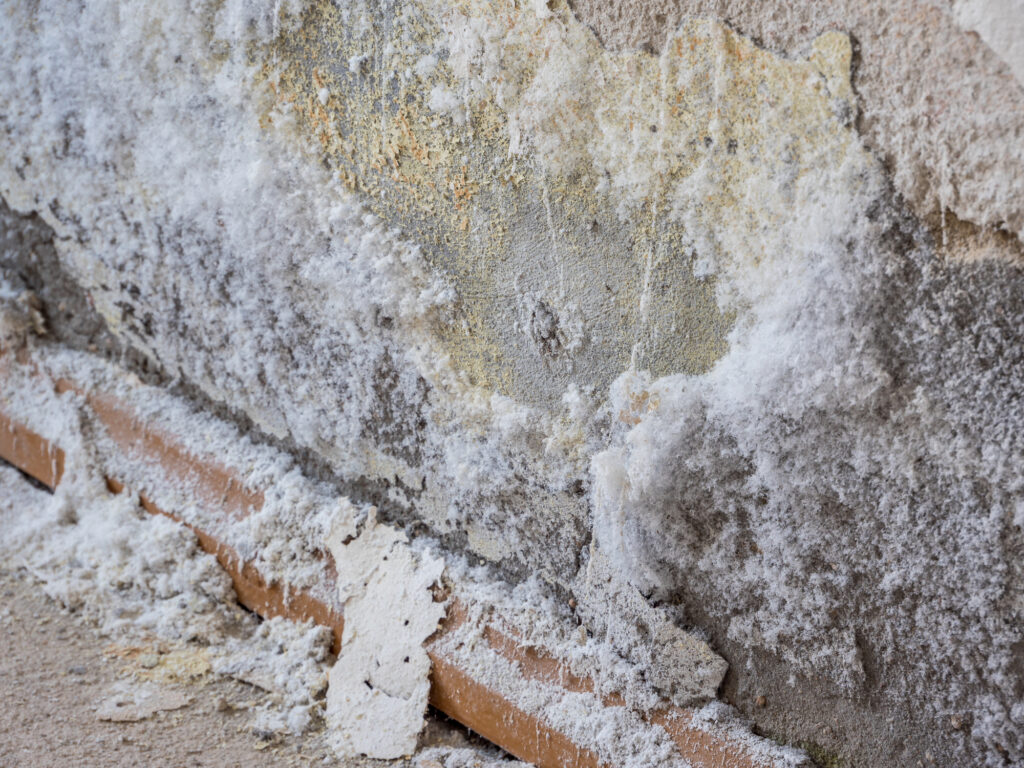We’ve all heard of mold and mildew, but what is the difference between the two? It can be very difficult to tell the difference if you aren’t aware of their distinct characteristics and properties. This blog will teach you about the difference between mold and mildew and tips on how to control their growth.
Definition and Characteristics of Mold and Mildew
Mold and mildew are both types of fungi, but they differ in definition, appearance, and texture.

Mold is a type of fungus that grows in the form of multicellular filaments called hyphae. It thrives in damp, warm, and humid environments and can appear in a variety of colors, including black, green, blue, or white. Mold often has a fuzzy or slimy texture and can penetrate the surface it grows on, causing structural damage.
Mildew, on the other hand, is a specific type of mold that generally remains on the surface of moist areas. It typically appears as a thin, powdery, or fluffy growth that is white, yellow, or gray. Mildew is most commonly found on organic materials like plant leaves, paper, fabrics, and in areas with high humidity, such as bathrooms and basements.
The key differences between mold and mildew lie in their color, texture, and the depth of penetration into surfaces. Mold is usually darker and can cause more extensive damage, while mildew is lighter and easier to clean.
Growth Environments
Typical environments where mold thrives include damp, warm, and humid areas with poor ventilation. Mold often grows in basements, bathrooms, kitchens, and laundry rooms where moisture is prevalent. It can also be found in hidden areas such as behind wallpaper, under carpets, or inside wall cavities where leaks or high humidity persist. Mold spores can attach to various surfaces, including wood, drywall, carpet, and insulation, and proliferate when conditions are favorable.
Mildew commonly thrives in slightly different environments. While it also requires moisture, mildew is more likely to be found on the surface of organic materials. This includes plants, leather, paper, and fabrics, as well as in bathrooms, kitchens, and other high-humidity areas. Unlike mold, mildew does not penetrate deeply into materials but instead remains on the surface, creating a powdery or fluffy appearance.
Conditions that promote growth for both mold and mildew include high humidity, poor ventilation, and the presence of organic materials that can serve as a food source. For mold, temperatures between 77°F and 86°F (25°C to 30°C) are ideal, though it can grow in a broader temperature range. Both fungi require moisture, whether from leaks, condensation, or high humidity levels are 60%. Inadequate airflow and poor maintenance practices, such as infrequent cleaning or delayed repair of water damage, further contribute to their proliferation.
Health Risks Associated with Mold Exposure
Here are some of the health risks associated with mold exposure:
- Nasal congestion
- Throat irritation
- Coughing
- Wheezing
- Eye irritation
- Skin rashes
- Asthma attacks
- Chronic respiratory issues
- Chronic sinus infections
- Neurological issues
- Organ damage
- Allergic reactions
- Fatigue
- Headaches
Health Risks Associated with Mildew Exposure
Here are health risks associated with mildew exposure, which are very similar to mold exposure:
- Coughing
- Sore throat
- Nasal congestion
- Headaches
- Mild skin irritations
- Respiratory issues
- Eye irritation
- Allergy symptoms
- Sneezing
- Fatigue
While both mold and mildew can affect indoor air quality and health, mold generally poses more severe health risks compared to mildew.

Identification
Identifying mold in your home or workplace involves looking for signs such as discoloration on walls, ceilings, or floors, typically in shades of black, green, or blue. Mold often has a fuzzy or slimy texture and a musty odor. You can identify mildew by its powdery or fluffy appearance, usually white, yellow, or gray, on surfaces like bathroom tiles, fabrics, and plant leaves.
Tools and techniques for proper identification include moisture meters to detect dampness, black light to spot mold growth, and mold test kits for collecting and analyzing samples. Professional inspections are recommended for accurate identification and assessment.
Prevention Tips for Mold and Mildew Growth
Maintaining low indoor humidity (below 60%), promptly fixing leaks, ensuring proper ventilation in moisture-prone areas, and using dehumidifiers are all ways to prevent mold growth. Regularly cleaning and drying areas prone to moisture also helps. Preventing mildew mildew growth involves similar strategies, in addition to cleaning surfaces with mildew-resistant products.
Removal and Treatment for Mold and Mildew Growth
Removing mold and mildew can be done in several different ways. Commercial mold and mildew cleaners, or homemade solutions like vinegar or a mixture of bleach and water, are effective methods. You can also scrub affected areas with a brush and allow enough time for the surface to thoroughly dry to prevent regrowth.
If mold covers an area larger than 10 square feet, if you have persistent health issues, or if the mold is caused by sewage or contaminated water, it is crucial to call professionals. Experts can provide thorough cleaning, repair structural damage, and ensure mold doesn’t return to provide safety and effectiveness.
Choose Nook-N-Kranny for Mold Remediation
Nook-N-Kranny is highly skilled and trained in handling mold infestations through our remediation services. We know the dangers that are associated with mold exposure, so we are sure to eradicate the problem completely to get your property safe. Contact us today if you have a mold problem that needs to be addressed by professionals, and we will get it taken care of.

